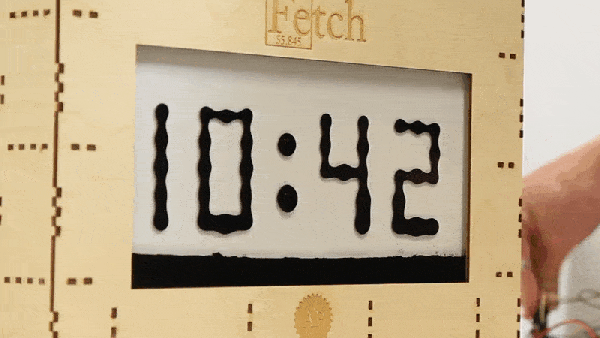The results are in and the Tell Time Contest was a spectacular showing of creativity. Five winners and a number of runners-up have have been chosen based on craftsmanship, functionality, and creativity.
The one that’s going to steal your heart is Fetch: A Ferrofluid Display. Pitting the force of gravity against electromagnetism, this project manages to wrangle a liquid into the segments of a display and the animations used to change between numbers are fascinating. It’s a wickedly complicated system and the gang over at Applied Procrastination did a great job of documenting the research and development that went into building this open source marvel. Has anyone tried to replicate it? We’d love to hear from you in the comments!

UV Glow-In-The-Dark Plot Clock

TORLO
Mechanical movements date back to the transition away from sundials and hourglasses, but these two modern takes on “clockwork” prove there’s still plenty of room for creativity. The first is a plotter that uses two servo motors and a UV LED to draw hours and minutes on a phosphorescent material.
The second is both minimal and a stunning mastery of a traditional clock mechanism. TORLO uses the voice coil from a hard drive to move the gears. It’s 3D-printed and does it all in plain sight, superb!

“Alien” Cuckoo Clock

Flip Dot Clock
Fans of the Alien franchise will immediately recognize this insect-like “facehugger”, the second stage of a developing Xenomorph. Embracing the tradition of the Cuckcoo clock, at the top of the hour a “Chestburster” pops through the chest of the bust to mark the passage of time. Creepy but well executed.
The flip-dot display uses a beautiful home-etched circuit board to keep things tidy inside of the case. Of course the question with these displays is always “where did you get the flip dots?”. This panel is on it’s second life after serving a tour of duty as a bus info sign.
Runners Up and Eight Score of Entries
Congratulations to all of our runners-up in the Tell Time contest. It was a tight field with 160 total entries, each of them a fascinating take on the simple, yet very complex practice of watching the seconds tick away. Add this to your weekend bucket list as you’ll certainly get lost in the details of many of these projects.




















